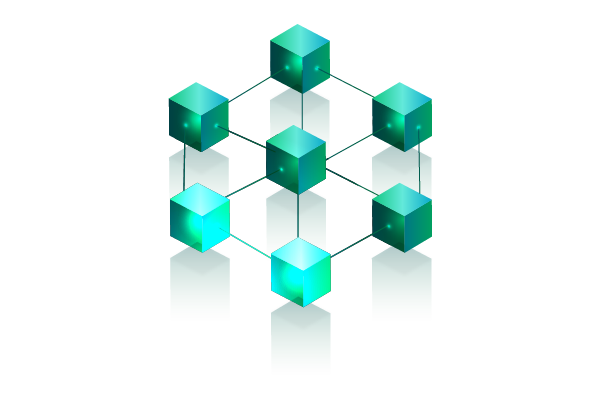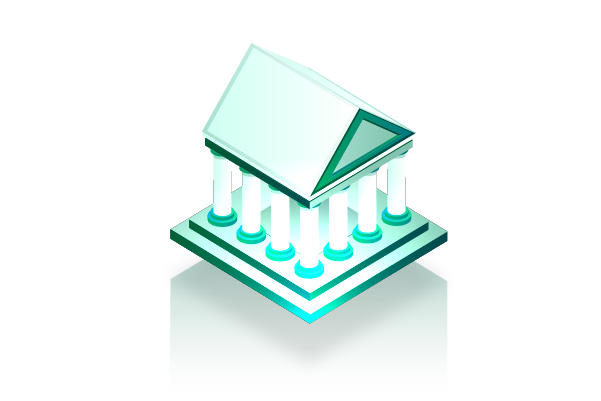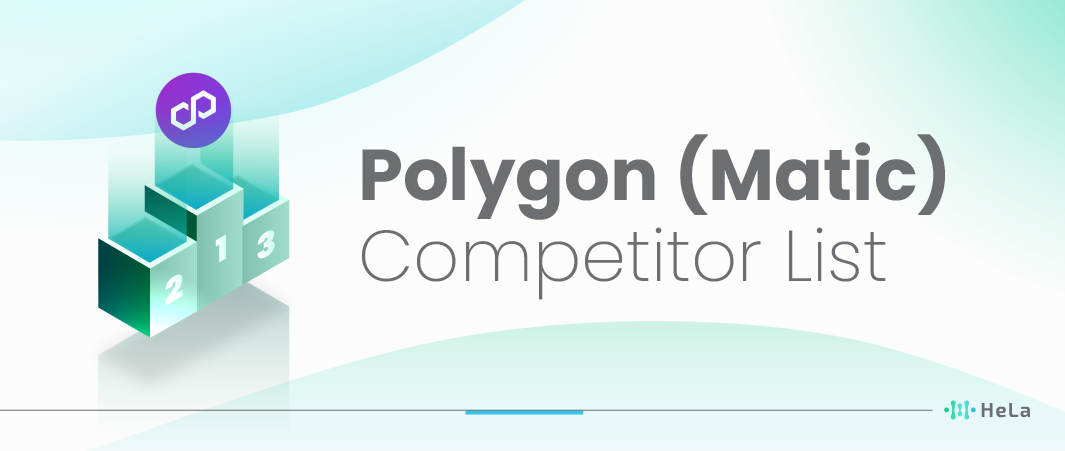As the blockchain landscape continually evolves, Polygon (Matic) stands out for its scalability and efficiency in Ethereum transactions. Yet, the year 2025 marks a turning point with several formidable platforms stepping up as competitors. These contenders are not just challenging Polygon’s position but are also pushing the boundaries of blockchain technology with their innovative solutions. This article aims to shed light on these top competitors, providing insights into their strategies, technological advancements, and the potential impact they may have on the blockchain ecosystem.
In this article, we will delve into the specifics of each major competitor, highlighting what sets them apart and how they are gearing up to challenge Polygon’s position in the market. Understanding these key players is essential for anyone invested in the blockchain space, whether you’re a developer, investor, or enthusiast looking to grasp the future dynamics of decentralized technologies.
Top 12 Polygon (Matic) Competitors in 2025

In 2025, the competition in the blockchain and cryptocurrency space continues to evolve rapidly, and Polygon (formerly known as Matic) remains a prominent player in the ecosystem. As the industry continues to grow and adapt, it’s important to keep an eye on the top competitors in the Polygon network’s space. These competitors are continually striving to offer innovative solutions and capture market share within the realm of Layer 2 scaling solutions and blockchain interoperability. Here are some of the top Polygon competitors to watch out for in 2025:
1. HeLa
HeLa Labs offers a modular Layer-1 blockchain solution, developed in collaboration with renowned engineers, scientists, and A*STAR IHPC. It’s designed for real-world adoption, with an open and inclusive ecosystem supporting builders at all levels. Key features include EVM compatibility for easy integration of applications, a modular design for flexibility and scalability, a scalable consensus protocol, high security with a sophisticated DID management system, and an asset integration layer for seamless integration of different assets.
HeLa Labs uses a stablecoin for transaction fees, ensuring stability and low costs, and leverages advanced cryptographic techniques like zero-knowledge proofs and homomorphic encryption. The HeLa Chain features a modular design with built-in stablecoin for gas fees, multi-level decentralized identity for enhanced security, and a Tendermint protocol-based consensus mechanism.
2. Retik Finance (RETIK)
Retik Finance is emerging as a significant competitor to Polygon in the DeFi space. With ambitious projects and goals, Retik Finance is set to challenge the established presence of Polygon. The platform aims to bridge traditional finance with the cryptocurrency sector, enhancing financial empowerment, reliability, and transparency across different sectors, including individuals, enterprises, institutions, and governments. Its partnership with global payment platforms like Visa and Mastercard has been pivotal in its adoption, contributing to its growing reputation as a potential DeFi powerhouse.
3. Solana (SOL)
Solana’s growth is driven by its high-performance protocol designed for decentralized applications and crypto-currencies. Known for its incredibly fast transaction speeds and low cost, it operates on a unique hybrid proof-of-stake and proof-of-history mechanisms, making it exceptionally efficient. With its strong infrastructure and growing ecosystem of projects, Solana is poised for significant advancements and increased adoption in the crypto space.
4. Aptos (APT)
Aptos is emerging as a strong contender in the blockchain arena, emphasizing scalability, reliability, and upgradability. It leverages a novel blockchain architecture designed to deliver unmatched scalability and composability. The introduction of inscriptions and a focus on developing a safe and scalable layer 1 blockchain make Aptos a promising platform for developers and users alike, aiming to redefine the way we interact with blockchain technology.
5. NEAR Protocol (NEAR)
NEAR Protocol is a layer-1 blockchain that provides a platform for dApps and goes a step further with its sharding technology, improving scalability and speed. It’s a community-run cloud computing platform, eliminating some of the limitations that older blockchains face. The protocol is user-friendly and aims to bridge the gap between traditional users and blockchain by creating a network that is fast, powerful, and ready for real-world use.
6. Arbitrum (ARB)
Arbitrum is a layer-2 scaling solution for Ethereum that aims to improve its scalability and reduce fees while maintaining a strong level of security. It operates by offloading transaction processing from the main Ethereum chain, thereby increasing speed and efficiency. As Ethereum continues to struggle with high fees and network congestion, solutions like Arbitrum are becoming increasingly important, driving its potential to be a top contender in the layer-2 space.
7. ScapesMania
ScapesMania is a relatively new entrant in the crypto market, but it’s quickly making a name for itself with its unique offerings. While specific details might be sparse, its rapid adoption and innovative approach in a crowded market show promise. By addressing some of the critical issues in the crypto space and introducing novel features, ScapesMania aims to carve out a niche for itself and compete with established players like Polygon.
8. Polkadot (DOT)
Polkadot stands out with its novel multichain sharding protocol, which significantly enhances interoperability across various blockchains. It allows for cross-chain transfers of any type of data or asset, not just tokens. This interoperability is critical for enabling a fully decentralized web where users can seamlessly interact with a variety of blockchains.
Polkadot’s relay chain provides shared security, and with its parachain architecture, individual chains can have unique characteristics yet still communicate with each other. The platform’s governance model is also innovative, allowing stakeholders to have a say in the future development of the protocol. It is ambitious in its scope and has the potential to change the way blockchains interact profoundly.
9. Cardano (ADA)
Cardano is more than just a cryptocurrency; it’s a technological platform that will be capable of running financial applications currently used every day by individuals, organizations, and governments all around the world. The platform is being constructed in layers, which gives the system the flexibility to be more easily maintained and allow for upgrades by way of soft forks.
After the settlement layer that will run ADA comes a separate computing layer that will handle smart contracts, the digital legal agreements that will underpin future commerce and business. Cardano will also run decentralized applications, or dapps, services not controlled by any single party but instead operate on a blockchain.
10. Optimism (OP)
Optimism is a layer-2 scaling solution for Ethereum that uses optimistic rollups to bundle large numbers of off-chain transactions into a single batch. This technology effectively reduces the strain on Ethereum’s network, decreasing transaction fees and improving transaction throughput significantly.
As Ethereum continues to face challenges with scalability, solutions like Optimism are vital for its continued growth and adoption. Optimism also inherits the robust security of Ethereum while enabling new and existing projects to scale to new heights. Its commitment to a more scalable and efficient Ethereum has garnered attention and support from across the crypto ecosystem.
11. Render (RNDR)
RenderToken is revolutionizing the digital content creation industry by decentralizing the process of rendering and graphic computation. This means that anyone with a GPU can contribute their rendering power in exchange for RNDR tokens.
The network effectively matches people needing rendering power with those who have it to spare, creating a more efficient and cost-effective rendering solution. It’s not just about creating a decentralized network for rendering; it’s about creating an economy of shared GPU resources, making high-quality rendering accessible to a broader audience. This has significant implications for industries like gaming, film, and virtual reality.
12. Sui (SUI)
Sui is a novel layer-1 blockchain protocol that focuses on delivering speed, reliability, and scalability to a wide range of applications. It’s designed to support a new wave of internet applications that require fast, secure, and scalable blockchain infrastructure. With its unique approach to consensus and transaction processing, Sui aims to provide an efficient and developer-friendly platform.
Its focus on enabling creators and developers to build experiences that were previously impossible or impractical is driving innovation in the space. By focusing on speed, simplicity, and security, Sui is positioning itself as a leading platform for the next generation of decentralized applications.
The Role of Decentralization in Competing Platforms

In the rapidly evolving landscape of blockchain technology, decentralization plays a pivotal role in shaping the competition between various platforms. Decentralization, a fundamental principle of blockchain, involves distributing control and authority among a network of participants, thereby reducing reliance on centralized entities. This section delves deeper into the strategies employed by different competitors in the blockchain space to enhance or diverge from conventional decentralization principles.
The concept of decentralization is closely tied to the blockchain trilemma, which presents a complex trade-off among three critical factors: scalability, security, and decentralization. Achieving optimal balances among these three elements is a formidable challenge, and the approach taken by each blockchain platform is instrumental in determining how they stack up against Polygon, a prominent player in the field.
As we delve into the intricacies of each competitor’s decentralization strategy, it becomes evident that there is no one-size-fits-all solution. Each platform navigates the blockchain trilemma with its unique approach, emphasizing different aspects depending on their goals, target audience, and the specific use cases they aim to address. This section will provide a comprehensive analysis of how these platforms tackle the decentralization challenge and how their respective strategies position them in the competitive landscape relative to Polygon.
Economic and Governance Models of Competitors

In the analysis of the economic and governance models of competitors, it’s essential to examine the intricate details that shape these platforms’ operational dynamics. This comprehensive exploration will shed light on the key factors that impact their sustainability, attractiveness to users, and overall competitive edge.
Token Economics
Token economics refers to how a platform’s native token is utilized within its ecosystem. This involves understanding its utility, distribution mechanisms, and incentives for various stakeholders. In addition to the broad strokes, it’s crucial to delve into the specifics of tokenomics.
For instance, how are tokens issued and what role do they play in facilitating transactions, governance decisions, or network security? Examining token staking, yield farming, and rewards mechanisms can provide insights into how platforms drive user engagement and participation.
Consensus Mechanisms
The choice of consensus mechanism underpins the platform’s security, scalability, and transaction speed. Analyzing the nuances of these mechanisms, such as proof-of-work, proof-of-stake, delegated proof-of-stake, or any hybrid approaches, can reveal their strengths and weaknesses. Considerations should include energy efficiency, decentralization, and the potential for 51% attacks. Additionally, the transition to more sustainable or efficient consensus mechanisms, if applicable, should be explored.
Governance Protocols
Governance protocols are the rules and processes by which decisions are made and implemented within the platform. A deep dive into governance models, such as on-chain governance, off-chain governance, or community-driven governance, will uncover how power is distributed and how upgrades and changes are proposed and approved. Evaluating the voting mechanisms, quorum requirements, and the role of key stakeholders in governance can offer insights into the platform’s adaptability and responsiveness to user needs.
By examining these aspects comprehensively, you can gain a more holistic understanding of how economic and governance structures influence the competitiveness and long-term viability of the competing platforms. This analysis will be invaluable in formulating strategies to navigate the dynamic landscape of blockchain and cryptocurrency ecosystems.
Future Roadmaps and Technological Advancements

In discussing future roadmaps and technological advancements of Polygon’s competitors, we’re essentially delving into the strategic planning and technological foresight of platforms operating in the blockchain and decentralized finance (DeFi) sectors. These competitors are likely focusing on enhancing scalability, interoperability, and security to maintain or elevate their position in the market.
- Scalability: As transaction volumes and user bases grow, these platforms must continue to innovate to handle increased demand without compromising speed or cost. Look for developments in layer 2 solutions, sharding techniques, or novel consensus mechanisms designed to process transactions more efficiently.
- Interoperability: The future of blockchain relies heavily on the ability of different networks to work seamlessly together. Competitors are likely to invest in cross-chain technology that allows for asset and data transfer between different blockchains, enhancing the network effect and usability of their platforms.
- Security Enhancements: As the value and usage of these platforms grow, so does the target on their back. Expect to see a continuous emphasis on advanced cryptographic methods, smart contract auditing practices, and innovative security measures to protect users’ assets.
- User Experience: Simplifying the user experience to attract a broader audience is critical. This includes everything from wallet improvements, user interface enhancements, and reducing the technical barriers to entry.
Also Read: What are Crypto Farms? A Comprehensive Guide
- Regulatory Compliance: With the increasing focus on cryptocurrency regulation, platforms that can navigate the regulatory landscape effectively will have a competitive edge. This might involve adapting to new laws, working with regulatory bodies, or innovating in ways that comply with or set the standard for regulatory acceptance.
- Sustainability Initiatives: As environmental concerns become more central to public discourse, blockchain platforms that prioritize energy efficiency and sustainable practices may gain favor among users and investors.
Competitors are likely not just aiming for incremental improvements but are also looking at disruptive innovations that could change the rules of the game. This might involve embracing new technological trends like quantum-resistant cryptography, AI integration for automated trading and security, or even entirely new blockchain architectures.
Conclusion
The blockchain ecosystem is rich with innovation and competition, with numerous platforms vying for the top spot in scalability and efficiency. As we move into 2025, the competition against Polygon (Matic) is fierce, with each competitor bringing unique strengths and advancements to the table. From Ethereum 2.0’s upgrades to emerging platforms like Harmony and Near Protocol, the landscape is dynamic and ever-changing.
In conclusion, the race is on for the top spot in the blockchain scalability and efficiency domain. The competition is not just a challenge for Polygon but a testament to the vibrant and innovative spirit of the blockchain community. As we observe and participate in this evolving landscape, one thing is clear: the future of decentralized technology is bright, diverse, and full of potential.
Disclaimer: The information provided by HeLa Labs in this article is intended for general informational purposes and does not reflect the company’s opinion. It is not intended as investment advice or recommendations. Readers are strongly advised to conduct their own thorough research and consult with a qualified financial advisor before making any financial decisions.

Joshua Soriano
I am a writer specializing in decentralized systems, digital assets, and Web3 innovation. I develop research-driven explainers, case studies, and thought leadership that connect blockchain infrastructure, smart contract design, and tokenization models to real-world outcomes.
My work focuses on translating complex technical concepts into clear, actionable narratives for builders, businesses, and investors, highlighting transparency, security, and operational efficiency. Each piece blends primary-source research, protocol documentation, and practitioner insights to surface what matters for adoption and risk reduction, helping teams make informed decisions with precise, accessible content.
- Joshua Soriano#molongui-disabled-link
- Joshua Soriano#molongui-disabled-link
- Joshua Soriano#molongui-disabled-link
- Joshua Soriano#molongui-disabled-link

